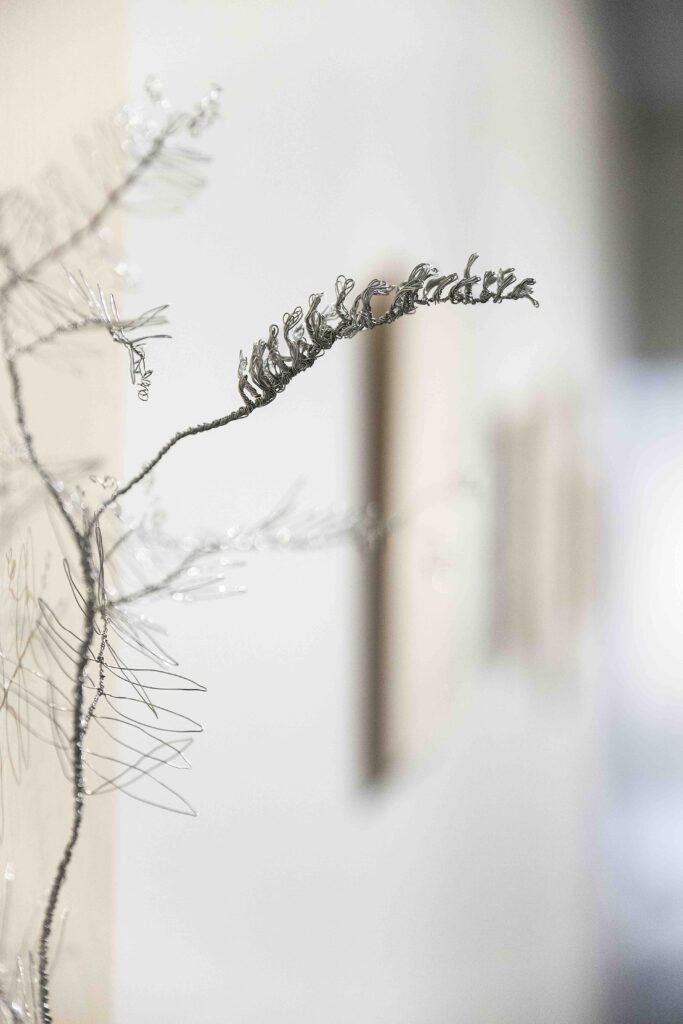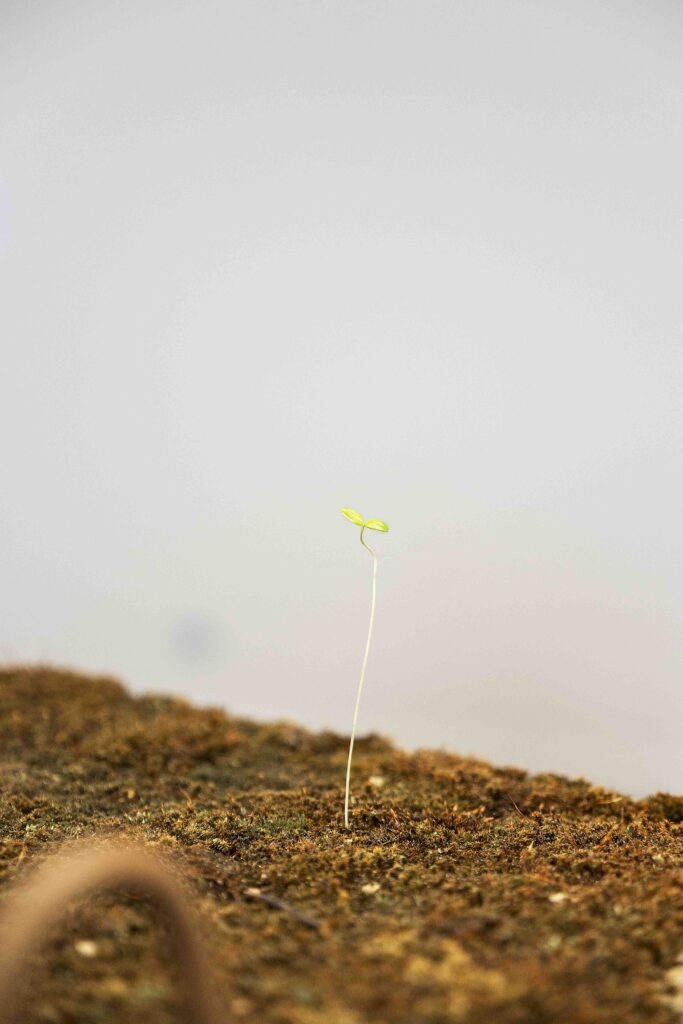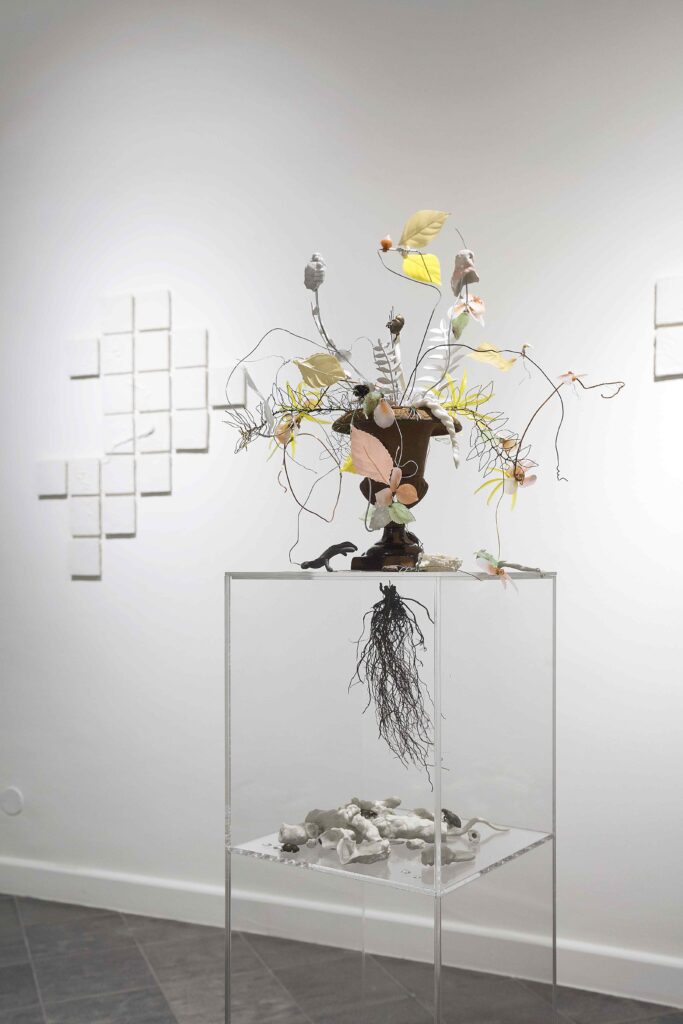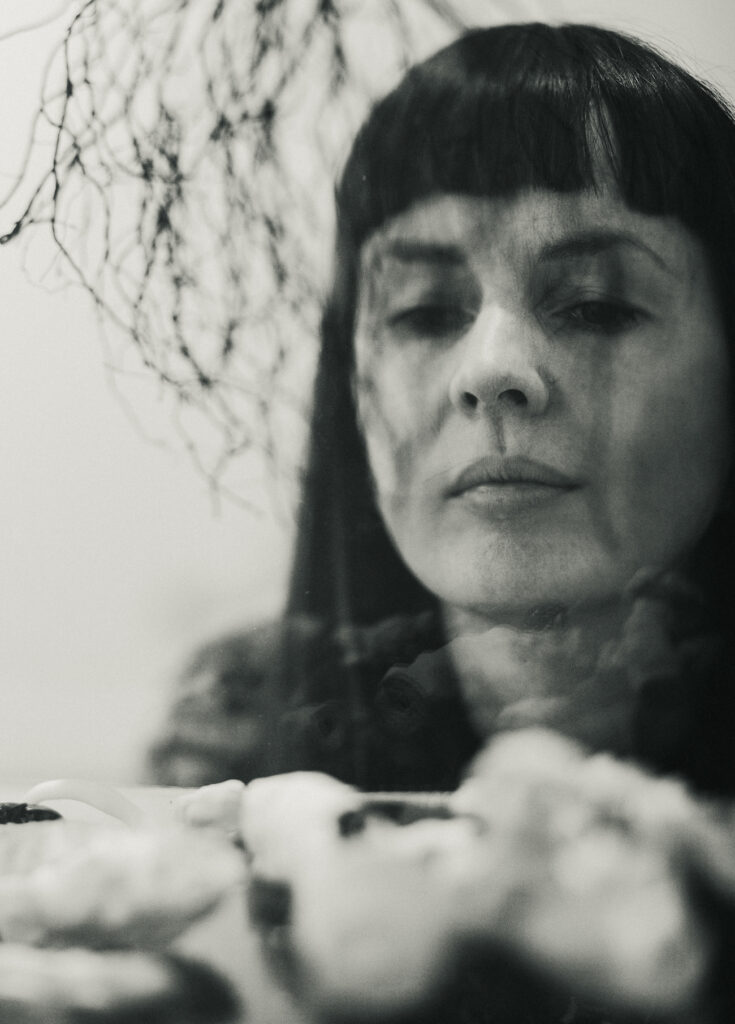The way nature wills its way into every nook and cranny, even to places where it is unwanted, creates a feeling that freedom, free space, and free will still exist in the world. Burgeoning envelops small moments of pleasure, reverie, and rest on what would otherwise be a routine course from one point to the next.
When I think of a large city, the first thing that comes to mind is that familiar grey tone. The neutral practical grey of concrete.
When I imagine spring, I picture a green tone and reminisce on emotions, sensations, running waters, springing grass leaves and budding trees. The ever-present anticipation of the first signs of snowdrops sticking up their heads from beneath the still frozen soil. After that, the expectation of the first pullulating shrubs, followed by the budding trees, the fragrance of the blooms, birds chirping in the foliage. I look forward to the spring because it brings light, warmth, and greenery.
But what if there were no plants? Then there would be neither insects nor birds. Would we be satisfied with a mere change in temperature and illumination? Would the joy that accompanies the arrival of spring be as deeply felt? On hot summer days, would our strolls be as enjoyable without the cooling and shade that the trees and shrubs provide us? Probably not.

If we lived in an utterly artificial environment, it might prove detrimental to our human psyche in a relatively short amount of time. As humans we do not differ from the rest of nature that much—we, too, are cyclical beings, living life according to our biorhythms. We need our reference points to determine the time and space which we occupy. Natural frequencies such as the circadian rhythm, the changing of the seasons and many other rhythmic events are what provide us this support mechanism. Even urban nature, green plants, bugs, birds, and animals support our mental health and wellbeing. Just as the bird visiting your windowsill might bring along joy and support, so might a plant sprouting in a concrete crack or growing in a garden provide valuable insight as an expression of these life cycles. It is like watching a series on someone’s life events, albeit the life of a weed. It is there and present for you—and that is no small matter.
At times I have fantasised about what it would be like to live in another time or find myself in captivity because of some wild twists and turns in my life—would I persevere psychologically? In conditions with nothing and no one of my own, where all rights and freedom have been suppressed and replaced, I would imagine the tiniest bud barely surviving somewhere by the side of a courtyard as something that offers a support frame.
I doubt if it is in any way possible to adequately sense and position oneself in reality if all natural aspects have been withdrawn.

Order is the death of creativity
I have no idea what it is like to be a plant. Clearly, the essence of plants is vastly different from ours. But their life cycles might not be. We, and they, have a discrete life rhythm and problems to solve. Like all living things, their main purpose is life itself and perpetuating the species. The first concept that comes to mind when thinking about plants, is ‘the will of life’.
Plants and animals are like reflection screens that enable us to see our own life cycles in an accelerated mode. Observation enables drawing conclusions and accepting the order of things in this world: life and death. Plants can, therefore, teach us more about ourselves than we might initially be able to appreciate. The trick is to keep our eyes and minds open, to take interest in and initiate the process of learning by mapping the desire to explore and ask questions. We must revisit our teacher again and again, gradually beginning to think and conclude for ourselves. Curiosity and observation skills are of high value in this process. It might happen that by following these instructions, a natural law may reveal itself and become better understood. After all, we are all interconnected, alike, and what happens in someone else’s life is also happening in our own life in one way or another.
Exessive control and order are the death of creativity; an error may be the key to creation, toward the new. Self-organisation and root-level push through. Plants are very punk.

We take plants for granted. The flora is something that is just simply always there somehow. We barely notice it. Plants are everywhere—they crawl through cracks in the paving and on rooftops. Anywhere a seed has fallen—whether it is by wind, human activity, carried by birds or animals—the potential of germination and growth is present. This is how new places are conquered.
Humanity, on the other hand, has been in a fight against nature since times immemorial, trying to subject her under its will. Removing unsuitable individuals or entire biomes, simplifying ecosystems to catastrophic extents. Driven by no more than economic gain, conquering of space for the benefit of its own population and creating a befitting aesthetic, constantly organising and editing. But nature does not need editing. It functions perfectly well in its intricate and sometimes fathomless order, is exciting and complex-beautiful.
It seems to me that the way nature wills its way into every nook and cranny, even to places where it is unwanted, creates a feeling that freedom, free space, and free will still exist in the world. Not everything can be subjected and organised: not in nature, not in humans. Excessive control and order are the death of creativity; an error may be the key to creation, toward the new. Self-organisation and root-level push through. Plants are very punk.
Plants also create a feeling of safety, as if despite what is happening at human level they will keep growing, no matter what. As long as plants keep growing, all is well. Somewhere there are systems that guarantee the functioning of things.

Abundant burgeoning
Burgeoning is a wonderful phenomenon that comes with plants. Self-forgetful, ignorant of restrictions, abundant proliferation. Proof of good health and a zest for life.
Nature is in constant flux. It is a good contrast to the static urban environment where it is difficult to modify principles, forms and volumes that have been agreed upon. Applied rules, imposed ideas.
Coppice forcing its way through broken asphalt, paving or cracks in a foundation provides unexpected moments of pleasure for an urban wanderer. Some plant habitats are reminiscent of a palm tree island, others resemble an ancient forest, or on the contrary, a sophisticated bouquet or work of art.
Burgeoning envelops small moments of pleasure, reverie, and rest on what would otherwise be a routine course from one point to the next. Adding sunlight, the smell of jasmine, birdsong, buzzing insects or human sounds appropriate for the moment to the mix might end up cocreating a spiritually uplifting, if not an utterly exhilarating experience. That is the type of human-scaled city that is worth inhabiting.

On an urban square at the place where the metal tubes of bike racks attach to the earth there is a small patch of soil that has been left vacant between the metal and the concrete. It is densely packed with tiny spore leaf plants. Someone has sown their seeds there. What a contrast between the stiff and cold concrete and metal, and these hyper delicate and fragile plant germs! Plus, there are plenty of them, more than we would think that crack could accommodate. All-conquering life force and plants running riot.
Humans as a mass population are also survivors and conquerors. As individuals, however, we should be more trusting of our creative burgeoning and internal courage.
A lovely sign of proliferation in urban space is apparent in apartment windows where pot plants that have found their forever homes on windowsills and flourished there for decades have filled up the entire hole in the wall that is supposed to let light flow through. What strange and perhaps quaint worlds might exist beyond such green curtains? Or perhaps someone’s life oasis and wonderland in an otherwise grey street reality?

As a child, self-organised worlds such as these used to be my playground, but I am still able to thoroughly enjoy them today. A stone garden that hid primaeval caves where bindweed and hopvine swished through, or a decayed stump with mushrooms, bugs and terrifying maggots whom I sometimes accidentally grubbed out from the decomposing duff. For some reason, the vegetating strip of grass by the side of the road used to seem so much more exciting than the indifferently burgeoning grassland because it allowed a different game rhetoric on a smaller scale. There should be more of those decaying tree stumps, rocks and flourishing thick brushwood areas in urban space because they would add space for exploration and free play. Parks should have more of those thick groves for birds, abundant plant life, some decomposing stumps for bugs and why not a small waterbody. That would make spending time and gazing nature in parks more interesting for residents. Cities should have these green oases that are a bit wilder by nature than what we are used to seeing.
If we are merely out to pursue an easily comprehensible order of things and economic gain and we over-regulate nature, we will become impoverished spiritually and mentally. One day, when the ecosystem has been pushed to its final frontier and it collapses, we will collapse with it.

‘Do you see them, too?’
I have come across people who honestly despise the free growth of plants, to whom any type of flourishing is something so awful that it must be immediately removed and nicely organised. I can only feel for them, for what could be more beautiful than observing something growing and progressing freely.
I am delighted by the urban trend of the past years to foster and promote biodiversity in cities. More and more natural plants can be seen in both urban green areas as well as home gardens. Achieving the perfect bloom effect has been replaced by a more natural and nature-friendly style. Unmown areas in gardens and by the sides of the roads are a delight to pass by with so much biodiversity and buzzing going on in them. A natural environment encourages people to be natural and feel a sense of belonging with all sorts of other creatures.
As humans it is up to each of us to establish our own connection and relationship to nature. If you claim to be a nature-lover, then try to understand and love all its components. Even those that might make you feel uncomfortable or scared at first, because they, too, have a significant role in ensuring that the thing we value the most could not only live and survive but thrive.
There is a place in Tartu where burr grows and every time I go there I end up coming back with its seeds stuck on me again. My companions never seem to catch them. I did not notice the plant itself until I started finding its seeds from my hair and clothes.
I gently pulled the burr from myself and placed it on the ground in another location. I feel the burr plants here love me. In fact, it is the first expression of love I noticed here. Because, who other than me can prohibit me from feeling the best of all feelings!? My own wellbeing and state of mind are what ultimately create my life. I suppose the burr plant really does depend on the services of someone like me and in my own quiet way I am happy that she has entrusted me with her new seeds in her infinite zest for life.

EIKE EPLIK is a sculptor and installation artist who uses motives from nature to narrate her stories.
PHOTOS: Eike Eplik’s exhibition ‘Shared Territory’ at Tartu Art Museum. Photos by Hedi Jaansoo. Eike’s portrait photo by Gabriela Urm
PUBLISHED: Maja 105 (summer 2021) with main topic Landscape Architecture!





